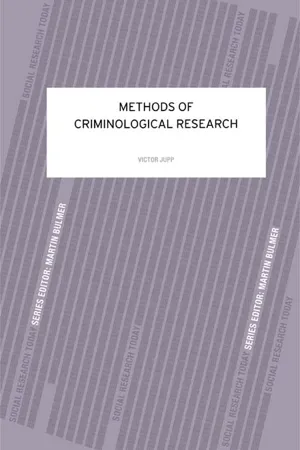Social Sciences
Types of Data
In the social sciences, data can be categorized into qualitative and quantitative types. Qualitative data is non-numeric and descriptive, often obtained through interviews, observations, or open-ended survey questions. Quantitative data, on the other hand, is numerical and measurable, typically collected through structured surveys, experiments, or existing records. These two types of data provide different insights and are often used in combination for comprehensive analysis.
Written by Perlego with AI-assistance
Related key terms
11 Key excerpts on "Types of Data"
- eBook - ePub
Got Data? Now What?
Creating and Leading Cultures of Inquiry
- Laura Lipton, Bruce Wellman(Authors)
- 2012(Publication Date)
- Solution Tree Press(Publisher)
This chapter explains data fundamentals—data types, sources, terms, and tools—to support groups in effectively implementing the collaborative learning cycle and to broaden perspectives on the Types of Data that might further their work. Schools and school districts are rich in data. Determining how much and what Types of Data will best serve collaborative inquiry and the group’s ultimate outcomes is critical to effective application of the collaborative learning cycle. It is important that the data involved provide both a broad and a deep view of the present picture but are not so complex that the process becomes overwhelming and unmanageable. By examining multiple sources of data, groups glean insights from several angles on the issues under study.Two Types of Data: Qualitative and QuantitativeFundamentally, there are two major Types of Data: (1) qualitative and (2) quantitative. Qualitative data rely on description, while quantitative data rely on numbers.Qualitative data tend to be narrative, holistic, and longitudinal. Schools may gather qualitative data from the classroom, grade, department, or school level. Classroom-, grade level–, or department-based data include anecdotal records, student work samples, portfolios, student interviews, checklists, and homework assignments. School-level data include meeting agendas, teacher demographics (years of experience, education, and so on), memos, schedules, and curriculum maps.Quantitative data are expressed numerically and statistically. Quantitative sources include test scores of all types, performance grades, attendance records, and enrollment data. Quantitative results are intended for comparisons between students, groups of students, schools, districts, states or provinces, and nations. Thus, they are expressed and described using stanines, quartiles, norm-curve equivalents, means, medians, and modes.Each type of data is organized differently for analysis. Because quantitative data use numbers, percentiles, and other mathematical configurations, and they are organized based on frequency distributions, central tendencies, variabilities, and dispersions, it is easier to create tables, charts, and graphs to discuss and analyze quantitative data. For example, isolating, or disaggregating, norm-referenced test scores by variables such as gender, race, or socioeconomic status allows teams to identify relationships and patterns within the blur of numbers. - Nicholas Walliman, Jane Appleton(Authors)
- 2009(Publication Date)
- SAGE Publications Ltd(Publisher)
It is good practice, and especially necessary with secondary data, to compare the data from different sources. This will help to identify bias, inaccuracies and pure imagination. It will also show up different interpretations that have been made about the event or phenomenon. Far from being an annoyance, this could provide a rich subject of debate in your dissertation. Academic writing thrives on controversy. You will thus have the opportunity to weigh up the evidence, to set up your argument, and to come to your own conclusions on the matter.Quantitative and qualitative data, and levels of measurement
The other main dual categories applied to data refer not to their source, but to their nature. Can the data be reduced to numbers or can they be presented only in words? It is important to make a distinction between these two Types of Data because it affects the way that they are collected, recorded and analysed. Numbers can provide a very useful way of compressing large amounts of data, but if used inappropriately they lead to spurious results. So how can these two categories be distinguished?Quantitative data
Quantitative data have features that can be measured, more or less exactly. Measurement implies some form of magnitude, usually expressed in numbers. As soon as you can deal with numbers, then you can apply mathematical procedures to analyse the data. These might be extremely simple, such as counts or percentages, or more sophisticated, such as statistical tests or mathematical models.Some forms of quantitative data are obviously based on numbers: population counts, economic data, scientific measurements, to mention just a few. There are, however, other Types of Data that initially seem remote from quantitative measures but can be converted to numbers. For example, people’s opinions about home births might be difficult to quantify. But if, in a questionnaire, you give a set choice of answers to the questions on this subject, then you can count the various responses. The data can then be treated as quantitative.- eBook - ePub
The Journey to Dissertation Success
For Construction, Property, and Architecture Students
- Elizabeth Laycock, Tim Howarth, Paul Watson(Authors)
- 2016(Publication Date)
- Routledge(Publisher)
Yes. I have made my initial choices although I recognise that these may change as my work develops. I understand that some research approaches are aligned more with qualitative methods and some are more associated with quantitative methods. I appreciate that the nature of the data will affect the analysis methods open to me. I am ready to continue.No. I have not yet made my initial choice. I will read further before making my decision.Types of quantitative data
Quantitative data can be drawn from experimental investigations, observation, case studies, questionnaires, literature and interviews. Methods of capturing and recording quantitative data vary greatly and must be carefully aligned to the purpose and objectives of the research. The type of quantitative data to be collected will inform the way in which the data need to be described, analysed and presented. Quantitative data types include the following:Nominal data or categorical data
Categories can be grouped and labelled but there is no underlying order among the categories; in other words, ordering of the categories is arbitrary. For example, rocks can be grouped into ‘igneous’, ‘sedimentary’ or ‘metamorphic’; participants may be labelled as ‘male’ or ‘female’ or some may ‘prefer not to say’; participants’ employment status might be described as ‘unemployed’, ‘part-time’, ‘full-time’, or ‘self-employed’. A further example is a number which is used instead of a name but which has no significance in terms of order (e.g. numbers on football shirts).Ordinal data
There is a logical ordering to the categories, but the difference between categories cannot be measured. One example is data collected using the Likert scale: strongly disagree; disagree; neutral; agree; strongly agree. Further examples are evidenced in degree classifications, the adjudged condition of second-hand books, and finishing places in a race.Interval data
This is numerical data where the intervals between each value are equally split, but there is no true zero (i.e. zero is allocated arbitrarily). Examples include temperature on the Celsius scale, cash flow on a graph and time periods on a Gantt chart. - eBook - ePub
Conducting Research in Human Geography
theory, methodology and practice
- Rob Kitchin, Nick Tate(Authors)
- 2013(Publication Date)
- Routledge(Publisher)
8 , this myth needs to be firmly quashed.3.2 Classifying data types and measurement scales
The quantitative analysis methods discussed in Chapters 4 and 5 require the collection of measured data. Such data represent one type of information which we can collect about phenomena in our environment. Here, measurements relate both to the fundamental properties of objects, where quantities like length extend through space, and to measurement operations performed on individual objects. In the former, measurements are known as extensive properties which form the basis of standard measuring systems such as the SI system in use by most scientists today (Chrisman, 1997: 8-9). However, this view of measurement is only appropriate for physical properties, and is not really applicable to the subject matter of most social scientists. The alternative latter view sees the process of measurement as being separate from the object being measured. This is usually referred to as a representative view of measurement. It was this view that was adopted in the levels of measurement developed by Stevens (1946) and listed in Box 3.1 . He identified four levels of measurement: nominal,Box 3.1 Levels of measurementNominal Observations are placed in categories, symbolised by numerals or symbols (e.g., A, B, C, D). Ordinal Observations can be placed in a rank order, where certain observations are greater than others. Assigned numerals cannot be taken literally (e.g., first, second, third, fourth). Interval Each observation is in the form of a number in relation to a scale which possesses a fixed but arbitrary interval and an arbitrary origin. Addition or multiplication by a constant will not alter the interval nature of the observations (e.g., 1°C, 2°C, 3°C, 4°C). - eBook - ePub
- Renata Tesch(Author)
- 2013(Publication Date)
- Routledge(Publisher)
Types of Qualitative Research IntroductionStrictly speaking, there is no such thing as qualitative research. There are only qualitative data. In many studies both quantitative and qualitative data are used; so if we wanted to distinguish research according to data types, there should be a third one: ‘mixed’. Of course, everyone would consider this quite ridiculous. ‘Qualitative’ research, as the term is used by many scholars, means a certain approach to knowledge production. It does not refer only to data. For the purposes of this book, however, it is useful to take ‘qualitative’ literally and consider qualitative research any research that uses qualitative data.Qualitative data is any information the researcher gathers that is not expressed in numbers. If we accept this definition, the range of qualitative data includes information other than words. Pictures are qualitative data, too. Drawings, paintings, photographs, films, and videotapes are qualitative data if used for research purposes, and even music and sound tracks can be considered data. There are almost no limits to the human creations and productions one could study. Some researchers have even worked with household garbage (Rathje, 1984).In this book we will not examine research using non-verbal qualitative data. Even if we concentrate on words, the focus will still be broad enough to include more types of research than are easy to deal with. Consider, for instance, that words can be looked at individually as symbols that are meant to convey a concept with certain meanings, or they can be looked at as building blocks of a narrative. There even is a way of looking at words quantitatively, and I don’t mean counting them. Statisticians sometimes treat words quantitatively because they can be placed in categories. A common example is gender. ‘Male’ and ‘female’ are attributes that the variable ‘gender’ may take on, and these two attributes can be assigned numbers (like ‘1’ for category ‘male’ and ‘2’ for category ‘female’), that can be manipulated statistically. Another name for these data is ‘categorical’, and another is ‘nominal’. Special statistical procedures have been designed to deal with them. Halsted Press published a book in 1975 on Analyzing Qualitative Data - eBook - ePub
Essential Environmental Science
Methods and Techniques
- Simon Watts, Simon Watts(Authors)
- 2003(Publication Date)
- Routledge(Publisher)
Social surveys can produce both quantitative (numeric) and qualitative (non-numeric) data. There is no absolute division between the two, but for general purposes qualitative data can be said to consist essentially of words – descriptions and discourse. You may find this kind of data useful in providing information on feelings, such as people's values, emotions, attitudes, predictions, hopes and aspirations. It is useful in illuminating changes through space and time. It is suitable, for example, for illustrating changing attitudes of the nation, or groups within the nation, towards ‘green’ issues over the past few years.Qualitative data are produced by what are known as ‘open-ended’ questions. These allow people to give general ‘free’ answers because responses are not guided into defined categories, Open-ended questions can supply rich insights into a person's feelings or life history but can be difficult to analyse, especially in a way that allows comparability between different respondents.Quantitative data are generally considered most useful in providing information on people's reasons for doing things, past events and preferences – things that can validly be expressed in numeric terms. Questions aimed at obtaining quantitative data provide fixed numeric values and are known as ‘closed’ or ‘precoded’ questions. Responses to them are restricted by the range of permissible answers that you supply. Such data are easier to analyse and can indicate strength of opinion or attitude and specific reasons. However, the restricted range of specific responses permitted to respondents may restrict or bias the answers received, notably because the specified responses may be quite different from those which the respondent would have said unprompted (Fink and Kosecoff, 1985).Questionnaires tend to rely more on the use of the closed type of questions and quantitative data. Nevertheless data of both quantitative and qualitative nature are useful in different situations, providing the researcher with a variety of perspectives from which to address the research brief. Table 9.2 compares the merits of qualitative and quantitative data although its coverage is far from exhaustive. In Table 9.2 - eBook - ePub
- Victor R Jupp(Author)
- 2012(Publication Date)
- Routledge(Publisher)
We shall look at Types of Data not just to reinforce once again—but in a different way—the plurality and diversity within the criminological enterprise, but, more fundamentally, to consider some of the assumptions about the nature of crime and criminality which are implicit in different Types of Data. These include assumptions about whether crime can be legitimately measured; assumptions about the appropriate unit and level of analysis—individual, social group or society; and assumptions about the primacy which should be given to antecedents and causality in any such analysis. Distinctions between Types of Data are not hard and fast. However, making such distinctions helps to portray the range of data available and to uncover implicit assumptions, particularly as they relate to types of theory and types of method in criminological research.Types of Data
Quantitative and qualitative data
First, we can distinguish data which are quantitative and data which are qualitative (sometimes also referred to as non-quantitative). Whether or not the use of the term ‘qualitative data’ is indicative of superiority vis-à-vis quantitative data is one of the fundamental issues implicit in the distinction. Quantitative research in criminology is founded on the assumption that the objects of inquiry—whether these be the characteristics of individuals or features of whole societies— can be defined and delineated unambiguously. What is more, this is linked to assertions that particular features of these objects can be categorized ‘objectively’ by the researcher and can be measured by the application of numbers to such categories and also to the number of cases within each of the categories.The emphasis which is placed upon measurement in quantitative criminology is closely associated with a strong investment in statistical analysis and particularly the use of ‘statistics of association’ which provide an indication of the extent to which variables co-vary. A typical example is the correlation coefficient , the size of which measures the strength of relationship between two specified variables. Correlation analysis will be considered in greater detail in Chapter 3 - eBook - ePub
- Clive Opie(Author)
- 2004(Publication Date)
- SAGE Publications Ltd(Publisher)
9 which look specifically at the analysis of qualitative data through the use of two computer software packages – NUD•IST and ATLAS.ti – from Scolari (2002).PART 1: QUANTITATIVE DATA
Types of quantitative data
Our starting point has to be an understanding of types of quantitative data and what you can do with it. Although a number of texts refer to four types of quantitative data – nominal, ordinal, interval and ratio (Sapsford and Jupp, 1996) – it is easier to reduce this to three where interval and ratio data are considered together. The fine distinction between interval and ratio data is discussed elsewhere (Moore, 1997) and for our purposes linking them will not be problematic. These Types of Data and a brief explanation of their differences are shown in Table 7.1 .It is not always easy to reconcile what type of data you have but it is crucial you know this, as this in turn will determine what you can do with it. For example nominal data only provides non-parametric statistics, which can measure mode frequencies and the use of the statistic analysis Chi square (χ2 ). Ordinal data offers other non-parametric statistical analysis such as Spearman Rank Order and Kruskal-Wallis tests. It is only with interval and ratio data that you can undertake parametric statistics such as ANOVA and t-tests. You may be getting worried at the terms in this paragraph but they are all explained in the Glossary (see Chapter 10 ), and keep in mind that for MEd work in many instances you may well not need to undertake anything more complicated than frequency counts, which are an aspect of descriptive statistics.Table 7.1 Types of quantitative dataType of dataFunctionNominal This simply puts data into categories – nothing more and nothing less. For example different types of ethnic groups. Ordinal This indicates that the order of numbers is meaningful but they have no arithmetical significance, i.e. the intervals have no constant difference between them. For example, grading students by exam marks. The order is meaningful but you cannot say that someone scoring 80% is twice as good as someone who scores 40% or that the difference between 45% and 55% is the same as that between 60% and 70%. - eBook - ePub
The Data Book
Collection and Management of Research Data
- Meredith Zozus(Author)
- 2017(Publication Date)
- Chapman and Hall/CRC(Publisher)
Secondary data use, also called reuse, involves any use of data for purposes other than those for which the data were originally collected. For example, educational data such as student grades collected by school systems and used to generate report cards and determine academic advancement (the primary data uses) may also be used by researchers to evaluate teaching methods or the impact of policy changes in school systems. Here, the research and evaluation are the secondary data use. Another example of secondary data use would be using data from a research project to answer questions not posed in the original study, perhaps years later, and by a different investigator. This categorization is helpful in that it helps make clear that secondary use of data may have some shortcomings and the capability of secondary data to support any particular use needs to be evaluated.The third categorization of data is called data types. Data types are a categorization usually based on the computational operations that can be performed on the data. They have pragmatic significance because they are often leveraged by software to aid in data processing and often are relevant to functionality specific to software that leverage declaration of data types to aid in data handling or processing in some way. As such, many of these operation-based typologies exist. One categorization researchers are likely to encounter (with many variations on the theme) is categorization as numerical versus character data, that is, numbers versus narrative or labels. Some add date as a separate data type. Categorization according to numerical versus character has some ambiguity because nominal and ordinal data may be stored as numerical values, for example, 1 = yes and 2 = no, where the data have no numerical significance—thus, there is a difference between the data type of the value and the inherent data type. Further, numerical does not distinguish between different types of numerical data such as integers and numbers with decimals.Some find categorization of data as continuous measures versus discrete measures helpful. A variable that can take on any value between two specified values is called a continuous variable. For example, a measured weight of a sample may be 2 ounces, 3 ounces, or any number in between such as a very precise measurement of 2.538 ounces. Discrete variables cannot take on any number, for example, the yield from a tomato plant may be one, two, three, and so on tomatoes, but a plant would not grow a half of a tomato. Different statistical operations are appropriate for continuous versus discrete data. A further distinction is made in that discrete variables are sometimes further specified as dichotomous, having only two available values, or polychotomous, having more than two valid values (Table 2.3 - Tiko Iyamu(Author)
- 2021(Publication Date)
- Routledge(Publisher)
In Lethbridge (1998), in which the survey research approach was employed, questions such as ‘What is your current knowledge about this, considering what you have learned on the job as well as forgotten? How useful has this specific material been to you in your career?’ were formulated and used in the data collection. Data collection Data collection involves the use of different techniques and approaches. Also, it is a series of interrelated activities aimed at gathering relevant information to answer the research questions that will arise or that were predefined (Cresswell, 2007). The techniques and approaches are selected based on the objectives of the study, and in alignment with the research design that are discussed above. Some of the techniques and approaches are interviews, questionnaires, observation, and document analysis. Data sources Oftentimes, data are collected from different sources that are usually categorised into primary and secondary. The different Types of Data collection techniques that are mostly associated with qualitative studies in IS are shown in Figure 2.2. The use of different methods for data collection enables the researcher to elicit different versions and forms of realities from participants. The possibility of using more than one of the techniques for data collection was suggested by Gillham (2000). In qualitative research, the primary data source is usually the interview technique, and the data from document analysis is considered secondary. The secondary data are usually existing, and may come as sources such as academics’ databases, and companies’ repositories, including websites. The types of materials (data) include peer-reviewed articles, white papers, strategy documents, financial reports, and annual reports- eBook - ePub
- Garry Anderson, Nancy Arsenault(Authors)
- 2005(Publication Date)
- Routledge(Publisher)
The use of quantitative data in qualitative research is not only useful, and often unavoidable, it provides yet another perspective. Continuing with the day care example, making a mental count of the number of broken toys may be useful, knowing the rate of staff turnover is important, comparing pay scales may shed light on employment variables, and the ratio of children to care givers could be significant. These are quantitative data, things with numeric values (e.g. 75 broken toys, a 1:10 vs 1:5 teacher/child ratio). While qualitative researchers may not always actively seek this type of information, it is often readily present and provides another source of insight. Most qualitative researchers do not statistically manipulate these numeric values; rather, they will use their general descriptive properties (e.g. counts, frequencies). If, on the other hand, you have selected a research methodology that purposefully blends qualitative research techniques with collecting data to be statistically analyzed, then your approach to data collection will be very different and you will have to concern yourself with various protocols relevant to the quantitative researcher.Data ManagementManaging the masses of qualitative data you collect during a study can be a nightmare, even for the most organized researcher on the planet. Between field notes, transcripts of interviews, records of physical artifacts, photographs, brochures, maps and souvenirs collected in the field, you can easily become lost in your own data. Fortunately, this can be minimized through careful planning before you enter the field. When managing qualitative data consider how a computer can be of use to you, think about a storage box for cassettes to be transcribed and another for those that are complete. Develop a filing system for raw data, keep back-up files and copies of vital information, and most of all, do not let your research materials collect in a’to-do’ pile in your office. Like field notes, do not wait to organize your data—you will regret it and your study will suffer.
Index pages curate the most relevant extracts from our library of academic textbooks. They’ve been created using an in-house natural language model (NLM), each adding context and meaning to key research topics.










